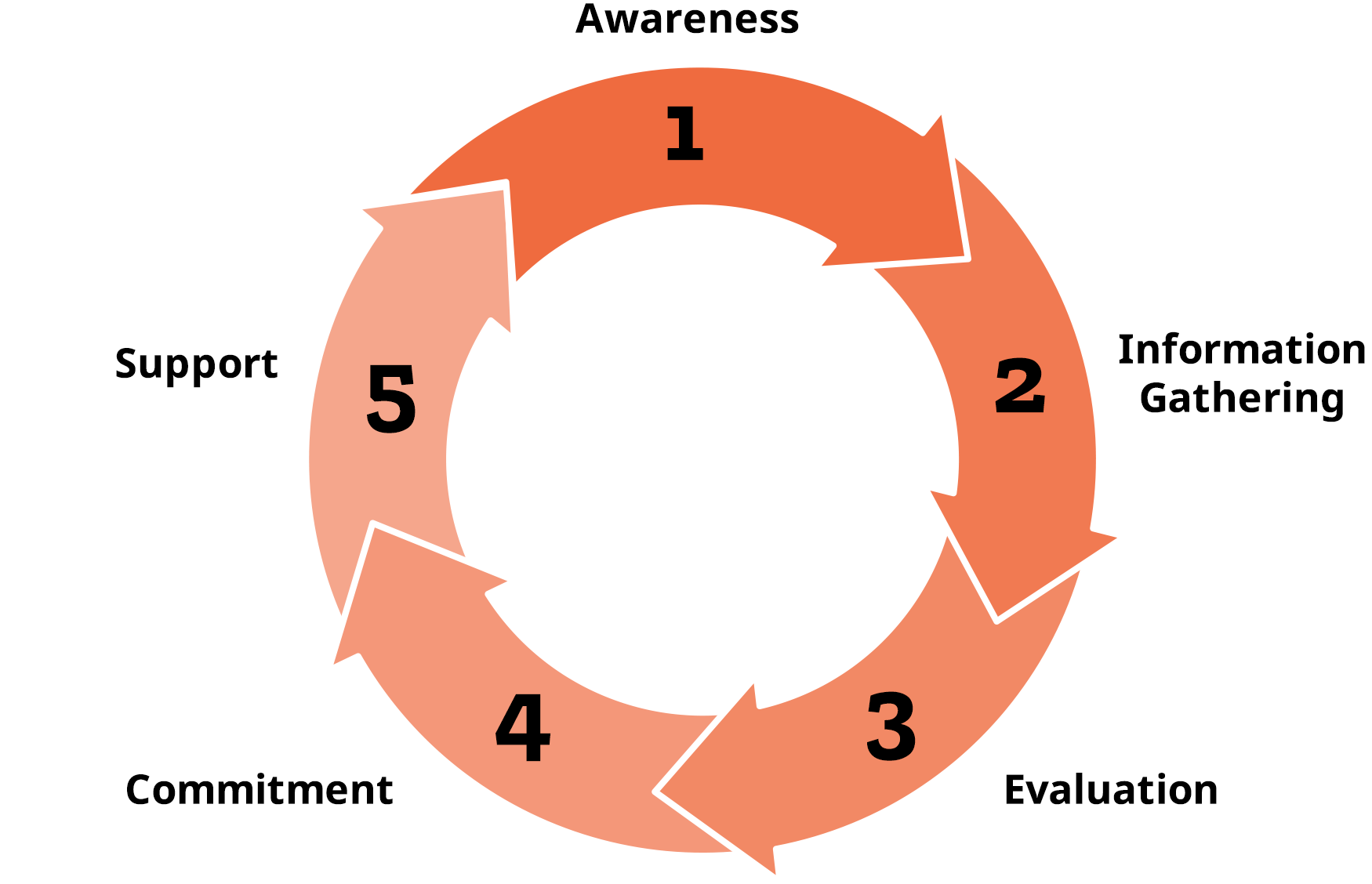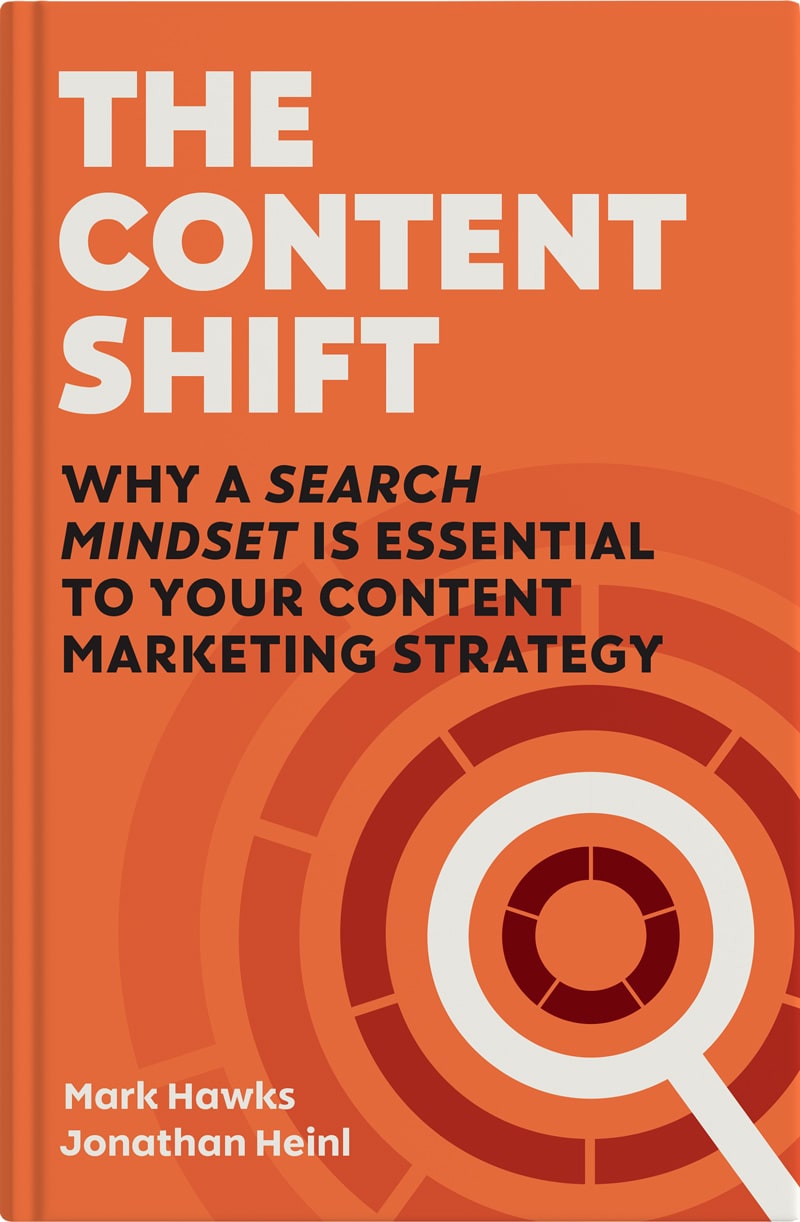The Search Cycle is a vital tool for content marketing. It helps us conceptualize different moments where your audience may encounter your content, products, services, and brand as they search for answers to their questions. Using this model, you can craft content to meet their needs at different stages, ultimately gaining their trust and providing opportunities for engagement and conversion.
The Search Cycle is a unique tool developed by Jon Heinl and Mark Hawks, authors of The Content Shift. It was developed after many years of observation in the SEO industry and is loosely modeled after the consumer buying journey. What makes the Search Cycle unique is that it specifically pinpoints the major stages a user typically goes through while researching for a purchase online. It is especially useful for businesses with a long search cycle, which typically sees customers researching many options before making a purchase.
Importance of Understanding Your Customers’ Search Behavior
We all know how search engines work. We want to find information so we type a phrase into Google. Your customers are doing this as they search for answers about your industry, topic, product, or service.
What if there was a way to more deeply understand the specific queries your audience is searching for? And what if those queries could tell us a lot about their state of mind, and how those different phrases make their way into the search cycle? Different search phrases can indicate what type of content people are looking for based on what we know about their searches along their journey.
The 5 Stages of the Search Cycle

Stage 1: Awareness
The first stage of the Search Cycle is Awareness. This is when your audience is just becoming aware of a problem or desire in their life that begins the journey toward your brand. What is their pain point that you are here to solve?
Types of Searches:
- “what is” or “what are” questions, such as “what is an IRA” or “what is a good career”
- “top X” or “best Y,” such as “best hiking shoes” or “top beach destinations”
- “most popular,” such as “most popular books for teens”
- “why is X important,” such as “why is it important to replace air filters”
Stage 2: Information Gathering
After the customer becomes aware of a pain point, they start investigating the issue more closely. In other words, they begin to research a solution to their problem. This is where the largest volume of searches happen. A customer may ask any number of questions before committing to a purchase. This stage provides the most significant opportunity to capture leads with excellent, informative content.
Types of Searches:
- “what is this feature,” such as “what is OLED”
- narrowing options, such as “best small truck”
- detailed questions, such as “hotels in Bahamas with pool”
Stage 3: Evaluation
Once a customer has gathered enough information to have some options, they enter the Evaluation stage. This is where someone might compare two product offers against each other, or two service companies. Reviews may help them do this. Content at this stage can be tailored to helping them make a decision toward your brand.
Types of Searches:
- “X vs Y,” such as “Marriott hotel vs Hilton hotel”
- “reviews,” such as “exterminator reviews near me”
- “or,” such as “Lyft or Uber”
Stage 4: Commitment
In this stage, a customer has made a decision to engage with your brand in some way, whether that’s making a purchase or agreeing to sign up for more information. This is typically the conversion stage where the content reinforces the purchase decision.
Types of Searches:
- “buy X product,” such as “buy 2022 Honda Accord”
- “promo codes or coupon codes,” such as “discount code for Macys online”
- “on sale,” such as “iPad sale”
Stage 5: Support
The Search Cycle doesn’t end at the point of purchase. There is plenty of opportunity to create content that confirms the purchase decision and offers resources to continue engaging with your brand. In some cases, support content may include how-to guides or user manuals.
Types of Searches:
- “how to” or user guides, such as “how to install Adobe Acrobat”
- follow up questions, such as “things to do around Marriott Bahamas”
- customization options, such as “adjusting print settings for HP printer”
Crafting Content for a Long Search Cycle
The Search Cycle is especially helpful for businesses that typically see customers conducting research before making a purchase. For example, someone might do a lot of research before buying new technology, a car, a training program, or a vacation. They have lots of questions because it might be a big investment or difficult to change later. A long search cycle typically means a deeper commitment, which makes the stakes higher. Therefore, well-placed content at different points in their journey is important to lead them toward choosing your company, product, or service as the best option.
When you’re trying to lead users toward a conversion, the Search Cycle can give you places to start or focus your efforts. At this stage of content development, the search research phase, we want to determine where to place your content marketing efforts and make sure they are aligned to your business goals.
We’ve made the claim that the content shift takes the guesswork out of content marketing. That’s why we focus on using search research tools to discover what those audience questions are. Learning what your audience searches for online equips you to make content that answers those search questions.
The Search Cycle is a vital tool for content marketing. It helps us conceptualize different moments where your audience may encounter your content, products, services, and brand as they search for answers to their questions. Using this model, you can craft content to meet their needs at different stages, ultimately gaining their trust and providing opportunities for engagement and conversion.
The Search Cycle is a unique tool developed by Jon Heinl and Mark Hawks, authors of The Content Shift. It was developed after many years of observation in the SEO industry and is loosely modeled after the consumer buying journey. What makes the Search Cycle unique is that it specifically pinpoints the major stages a user typically goes through while researching for a purchase online. It is especially useful for businesses with a long search cycle, which typically sees customers researching many options before making a purchase.
Importance of Understanding Your Customers’ Search Behavior
We all know how search engines work. We want to find information so we type a phrase into Google. Your customers are doing this as they search for answers about your industry, topic, product, or service.
What if there was a way to more deeply understand the specific queries your audience is searching for? And what if those queries could tell us a lot about their state of mind, and how those different phrases make their way into the search cycle? Different search phrases can indicate what type of content people are looking for based on what we know about their searches along their journey.
The 5 Stages of the Search Cycle

Stage 1: Awareness
The first stage of the Search Cycle is Awareness. This is when your audience is just becoming aware of a problem or desire in their life that begins the journey toward your brand. What is their pain point that you are here to solve?
Types of Searches:
- “what is” or “what are” questions, such as “what is an IRA” or “what is a good career”
- “top X” or “best Y,” such as “best hiking shoes” or “top beach destinations”
- “most popular,” such as “most popular books for teens”
- “why is X important,” such as “why is it important to replace air filters”
Stage 2: Information Gathering
After the customer becomes aware of a pain point, they start investigating the issue more closely. In other words, they begin to research a solution to their problem. This is where the largest volume of searches happen. A customer may ask any number of questions before committing to a purchase. This stage provides the most significant opportunity to capture leads with excellent, informative content.
Types of Searches:
- “what is this feature,” such as “what is OLED”
- narrowing options, such as “best small truck”
- detailed questions, such as “hotels in Bahamas with pool”
Stage 3: Evaluation
Once a customer has gathered enough information to have some options, they enter the Evaluation stage. This is where someone might compare two product offers against each other, or two service companies. Reviews may help them do this. Content at this stage can be tailored to helping them make a decision toward your brand.
Types of Searches:
- “X vs Y,” such as “Marriott hotel vs Hilton hotel”
- “reviews,” such as “exterminator reviews near me”
- “or,” such as “Lyft or Uber”
Stage 4: Commitment
In this stage, a customer has made a decision to engage with your brand in some way, whether that’s making a purchase or agreeing to sign up for more information. This is typically the conversion stage where the content reinforces the purchase decision.
Types of Searches:
- “buy X product,” such as “buy 2022 Honda Accord”
- “promo codes or coupon codes,” such as “discount code for Macys online”
- “on sale,” such as “iPad sale”
Stage 5: Support
The Search Cycle doesn’t end at the point of purchase. There is plenty of opportunity to create content that confirms the purchase decision and offers resources to continue engaging with your brand. In some cases, support content may include how-to guides or user manuals.
Types of Searches:
- “how to” or user guides, such as “how to install Adobe Acrobat”
- follow up questions, such as “things to do around Marriott Bahamas”
- customization options, such as “adjusting print settings for HP printer”
Crafting Content for a Long Search Cycle
The Search Cycle is especially helpful for businesses that typically see customers conducting research before making a purchase. For example, someone might do a lot of research before buying new technology, a car, a training program, or a vacation. They have lots of questions because it might be a big investment or difficult to change later. A long search cycle typically means a deeper commitment, which makes the stakes higher. Therefore, well-placed content at different points in their journey is important to lead them toward choosing your company, product, or service as the best option.
When you’re trying to lead users toward a conversion, the Search Cycle can give you places to start or focus your efforts. At this stage of content development, the search research phase, we want to determine where to place your content marketing efforts and make sure they are aligned to your business goals.
We’ve made the claim that the content shift takes the guesswork out of content marketing. That’s why we focus on using search research tools to discover what those audience questions are. Learning what your audience searches for online equips you to make content that answers those search questions.



